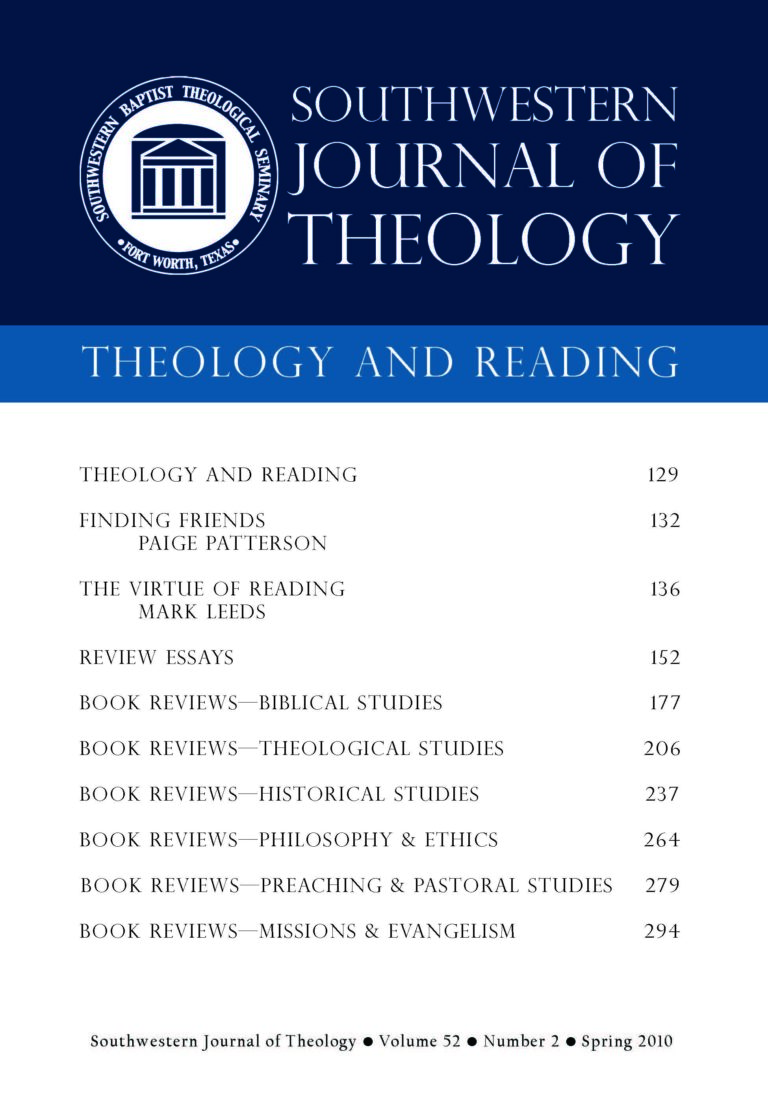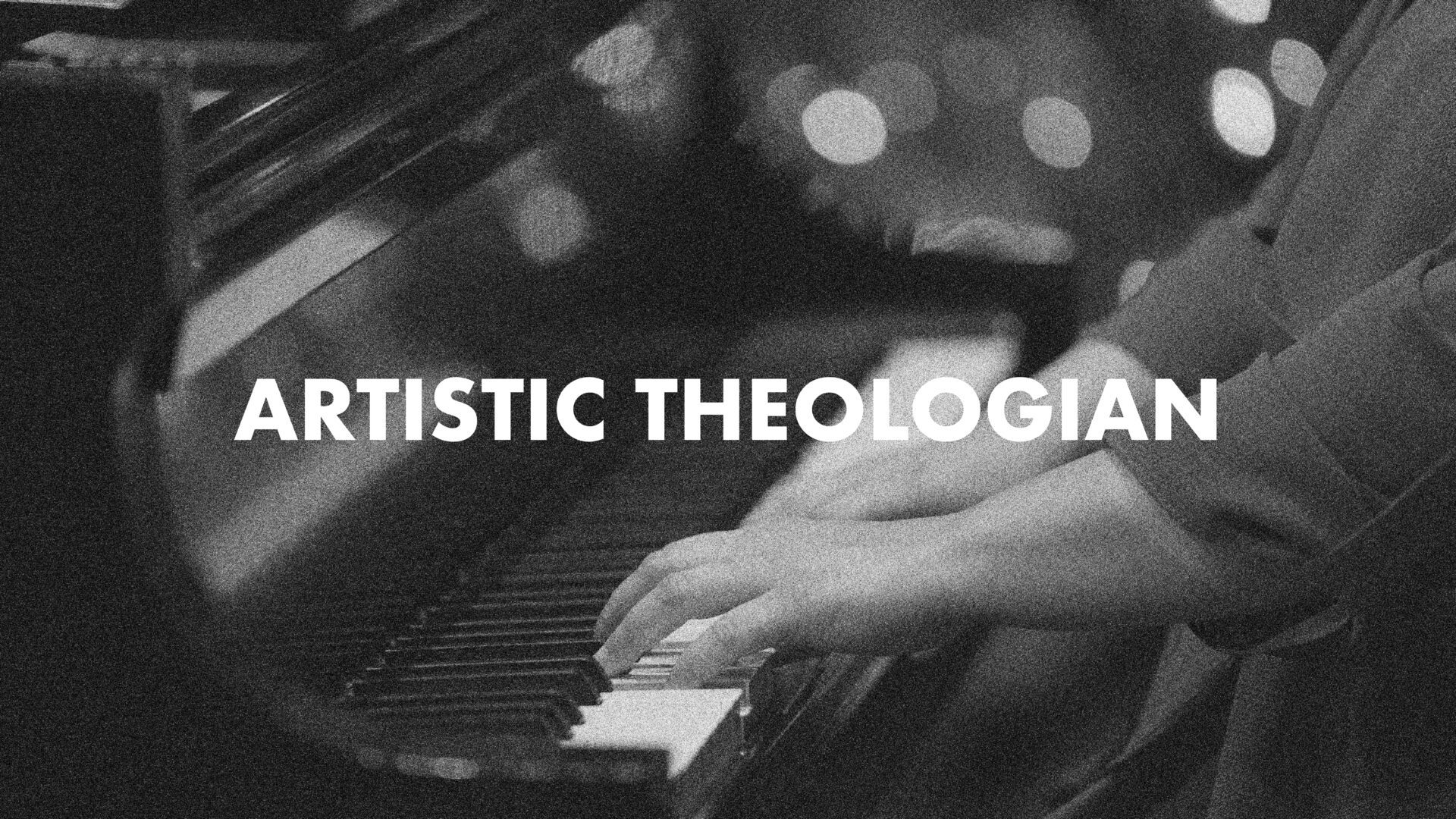
Theology and Reading
Southwestern Journal of Theology
Volume 52, No. 2 – Spring 2010
Managing Editor: Malcolm B. Yarnell III
By Daniel J. Treier. Grand Rapids: Baker, 2008. 221 pages. Softcover, $17.99.
Daniel Trier, Associate Professor of Theology at Wheaton College, stands in the company of scholars including Vanhoozer, Webster, Fowl, and A.K.M. Adam currently leading the charge for theological interpretation. In this band he seeks to offer insight into how believers can better engage Scripture, the church and the world as more diverse interpreters of Scripture. While Treier writes in the context of his aforementioned associates, he maintains his unique voice through analysis and at points critique of others championing theological interpretation. Theological interpretation as a discipline draws upon the fields of historical theology, systematic theology, linguistic philosophy and biblical studies. In his volume, Treier navigates these tributaries in hopes of providing definition, cogency and a way forward for the stream of theological interpretation.
As the subtitle of the book indicates, Trier views the practice of theological interpretation as a historical practice in need of recovery from neglect at the hands of critical theory and the consequent narrowly defined historical-grammatical method. Given this perspective, Treier naturally begins with a brief survey of the manner in which theological interpretation declined and how it has come to resurgence. Following this introduction the book is divided into two parts. In part one, Treier dedicates three chapters to defining theological interpretation in a way consistent with the practice of the ancient church. In these chapters he extols the virtues of “pre-critical” interpretation, promotes reading according to the Rule of Faith, and prescribes interpreting Scripture as a “community of the Spirit.” Here lie the common ideas for advocates of theological interpretation. These chapters serve as the most fruitful in that they demonstrate the bankruptcy of purely critical interpretation as well as the value of theological presupposition. Treier recognizes that Western Christianity’s obsession—critical objectivity—is ultimately impossible and even worse produces unhealthy interpretation.
In part two, Treier dedicates three chapters to navigating issues which lack consensus in the movement. These chapters contain an analysis on the relationship between Biblical Theology and hermeneutics, an appraisal of general hermeneutics for interpreting Scripture, and an assessment of theology and interpretation in the “global church.” These chapters provide valuable summary of the competing voices from within the movement concerning these issues. Perhaps the most intriguing distinction within the movement concerns the use of biblical theology in interpretation. Treier gives three approaches theological interpreters offer for utilizing biblical theology in such a way that avoid its primary pitfall—the fracturing of biblical unity. The options are to view perceived conflicts in the canon as complementary angles on common truths, to interpret the Bible in a primarily literary manner to avoid historical questions, or to redefine biblical theology in a way similar to theological interpretation.
Among other strengths to the book, Treier provides a legitimate answer to the question raised by postmodern interpretation of how personal and communal presuppositions influence interpretation. He demonstrates throughout that one must be conscious of their context and tradition by using theology to interpret Scripture according to guides such as the Rule of Faith. In the process, purely critical interpretation is exposed as void of scriptural authority and lacking Christian character. Perhaps the greatest strength is his concern that theology is necessary to the spiritual health of the Christian community. Treier seeks a recovery of theology in the life of every church member when he writes, “Theology is the practice of all Christian people growing in their knowledge of God amidst their various life activities and church practices” (188).
Treier’s concern for the church provides context for mentioning two weaknesses. First, the reader would expect writing readily accessible to those outside the academy from an introductory work that has as its aim the reclamation of theological interpretation in the church. However, several elements of the book indicate that it will best find an audience in academic circles. It is illustrative that a concise definition of theological interpretation does not appear until page 200 rather than at the beginning of the work. A second weakness is Treier’s ambiguous idea of the Christian community. Two chapters are specifically devoted to the role of church tradition and context in interpretation. The titles for the church used in these two chapters, “the Community of the Spirit” and “the Global Church,” illustrate the ambiguity of which church traditions are authoritative in interpretation. There is little offered to guide the theological interpreter in situations of competing influences from differing ecclesial traditions. Overall this book is highly valuable for restoring the nexus of theology, interpretation, and spiritual health in the church.





